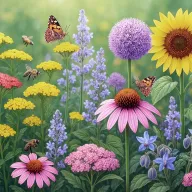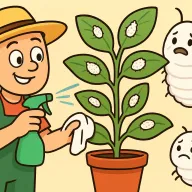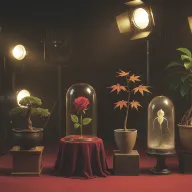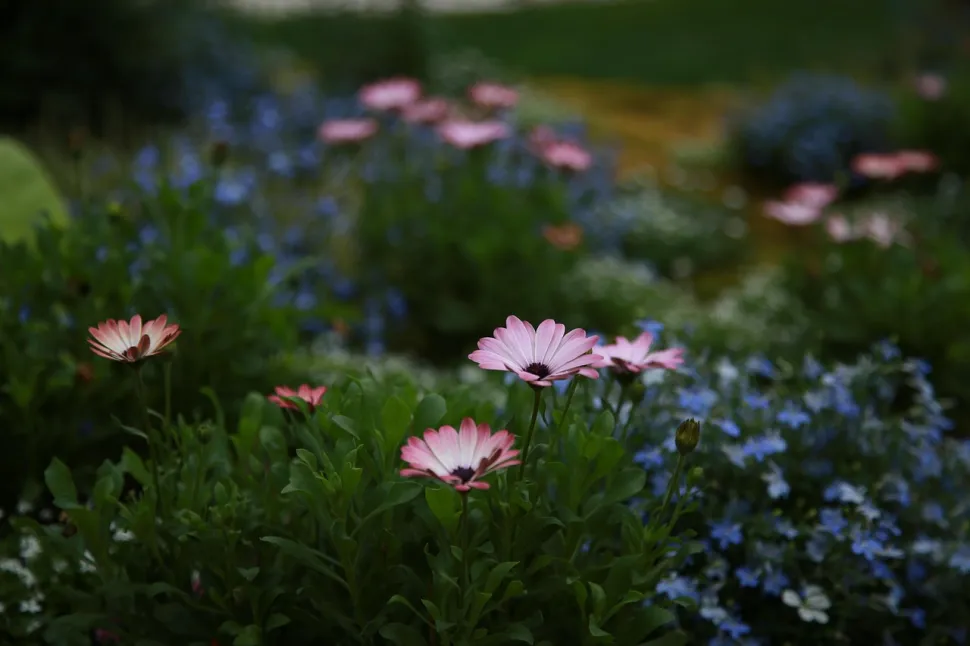
10 things you may not know about chrysanthemums
Article for :All parent plants
Chrysanthemums aren't just flowers for the dead, cemeteries and All Saints' Day! This plant has many other facets. TheMonstera application invites you to discover them.
#1 Not all Chrysanthemums are Chrysanthemums
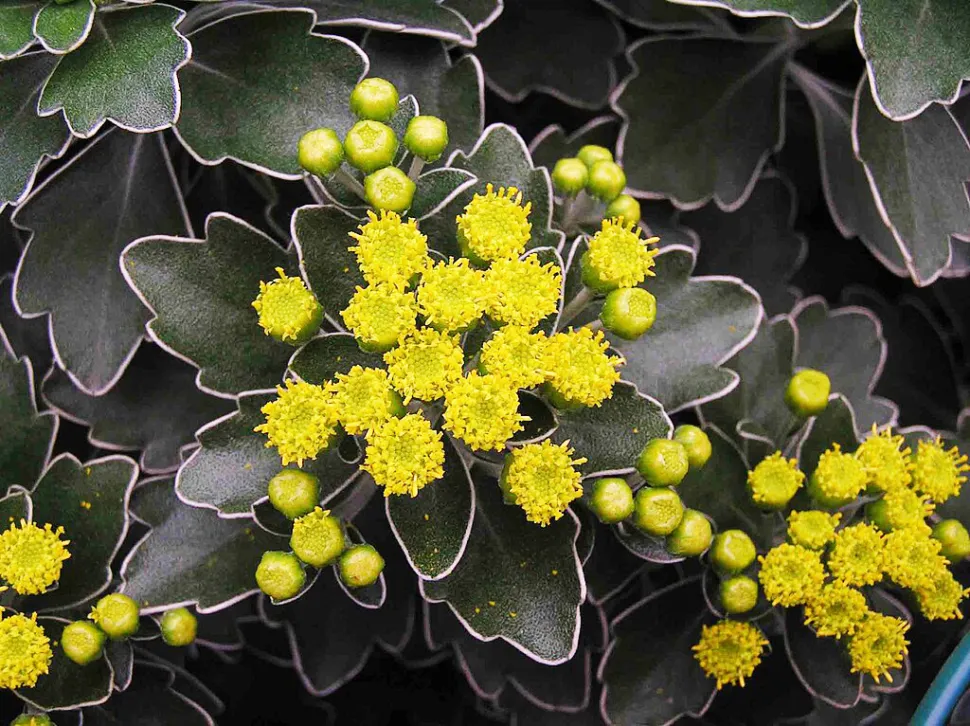
This is not a Chrysanthemum, but a Chrysanthemum pacificum - Photo by HQ Flower Guide / Wikipedia
In botany, Chrysanthemum refers to a genus of plants in the Asteraceae family. These include florist's Chrysanthemum (Chrysanthemum moriflorum), garden Chrysanthemum (Chrysanthemum indicum) and arctic Chrysanthemum (Chrysanthemum arcticum).
But in common parlance, flowering plants that belong to different genera are sometimes called chrysanthemums! This is the case, for example, with :
- Harvest Chrysanthemum, in Latin Glebionis segetum, which belongs to the genus Glebionis ;
- Chrysanthemum carina, in Latin Ismelia carinata, which belongs to the genus Ismelia ;
- Chrysanthemum pacificum, in Latin Ajania pacifica, which belongs to the genus Ajania.
What these Chrysanthemums have in common, whether true or false: they're all members of the Asteraceae family, and their flower heads resemble those of daisies.
#2 Not all Chrysanthemums come from Asia
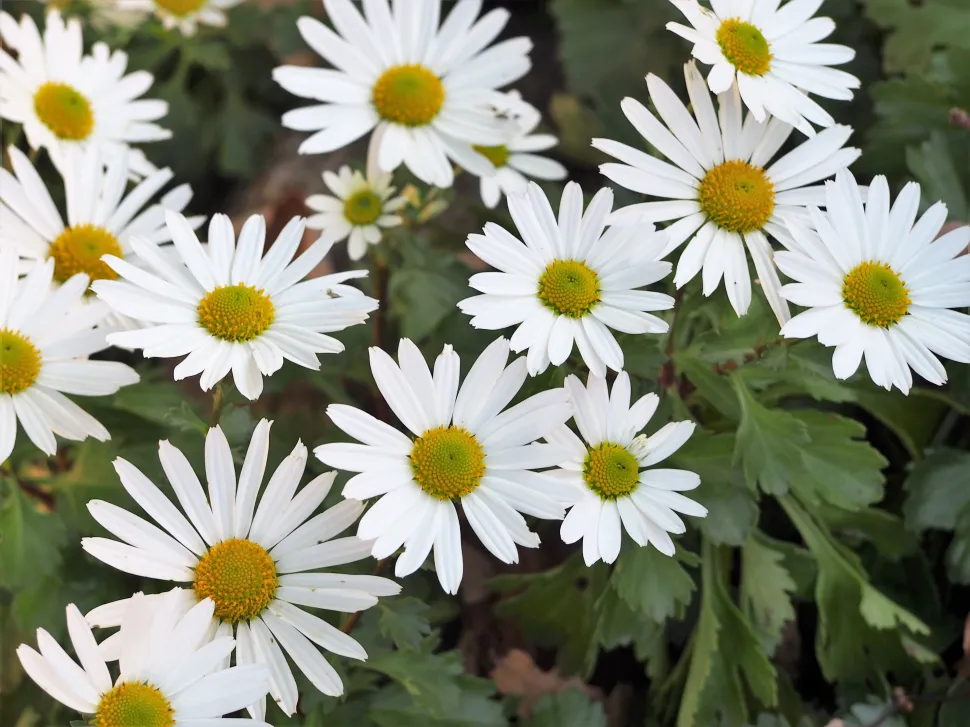
Chrysanthemum arcticum is native to northern Europe and America - Photo by Agnieszka Kwiecień / Wikipedia
Most Chrysanthemum varieties, such as autumn Daisy (Chrysanthemum rubellum), originate in China. The flower has been cultivated there for 2,000 years. Many species are also endemic to Korea, Japan or even Vietnam and Taiwan.
But Asia isn't Chrysanthemums' only homeland. Chrysanthemum arcticum comes from North America (Canada and Alaska in particular) and northern Russia.
# 3 It's easy to care for
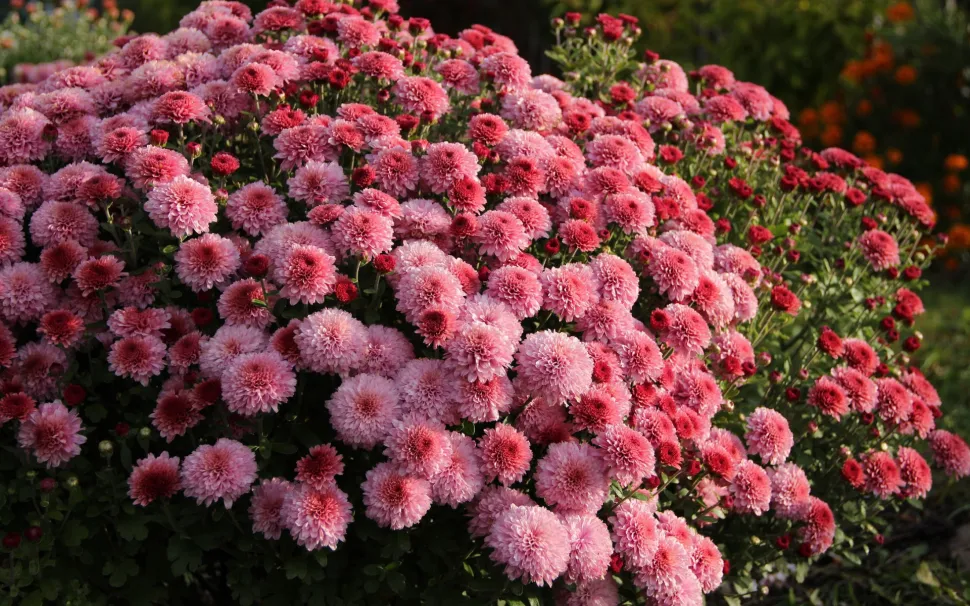
You don't need a green thumb to grow a beautiful pink chrysanthemum - Photo by Mila / Goodfon
Growing a chrysanthemum in a pot or in the ground is easy for any gardener. A hardy plant, it fears excess humidity more than cold or drought. All it needs is watering when the soil has dried on the surface, a little fertilizer during the flowering period and a well-draining potting soil.
A few tips will help you get even more beautiful flowers:
After flowering, cut the clump back to 10 cm from the ground to keep it compact;
- Pinch stem ends to stimulate branching;
- Remove spent flowers to encourage the appearance of flower buds;
- Remove flower buds at the ends to encourage the appearance of larger flowers in the center.
#4 Chrysanthemums are frost-resistant
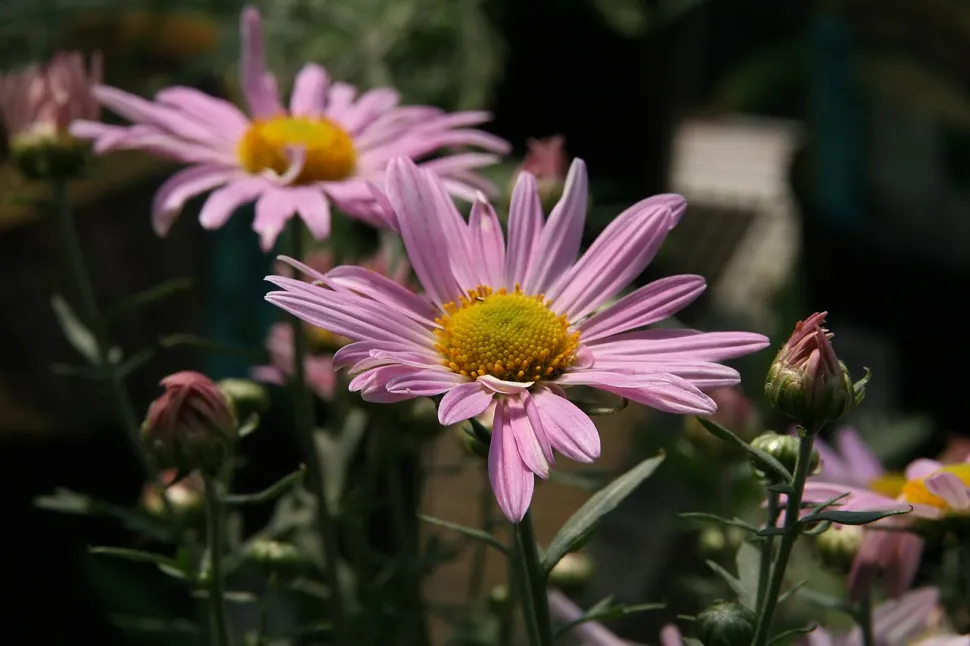
Chrysanthemum zawadskii is one of the hardiest - Photo by David J. Stang/ Wikipedia
Chrysanthemums are hardy plants. Most cultivars and hybrids can withstand temperatures down to-5°C or even -15°C. Chrysanthemum arcticum and Chrysanthemum zawadskii are native to the coldest regions of the world, such as Alaska, Siberia and the Himalayas, and can withstand temperatures as low as -30°C.
If you've chosen a less hardy variety, such as Florist's Chrysanthemum, it will do just fine down to -5°C. If the mercury drops lower, mulch the base with organic matter such as dead leaves or wood shavings. For potted plants, elevate the planter to prevent it coming into contact with the cold soil, or bring it inside under unheated shelter.
And if the stump disappears, don't panic! There's a good chance it will come back to life in the spring, and your plant will flower the following autumn.
#5 The tradition of flowering graves with chrysanthemums is recent
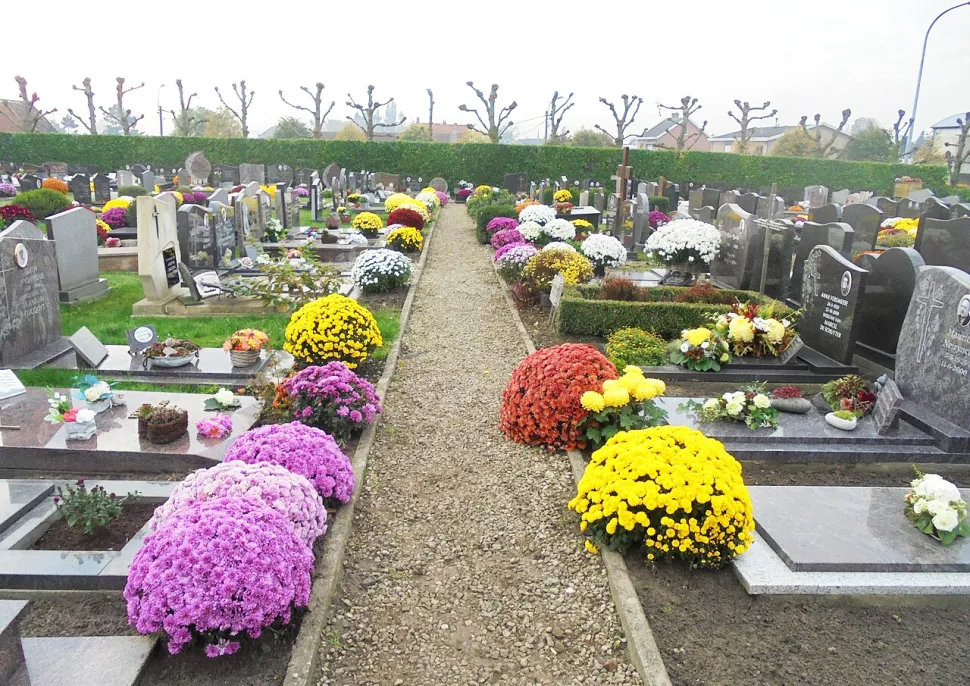
Poilus are no longer the only ones entitled to chrysanthemums in November - Photo by Spotter2 / Wikipedia
On November 11, 1919, the first anniversary of the armistice, Georges Clémenceau asked the French to put flowers on the graves of the poilus. President Poincaré himself brought a wreath of chrysanthemums during his visit to the Père-Lachaise cemetery, and the French followed suit. This choice was above all practical: in the middle of November, it's hard to find anything other than chrysanthemums when you're looking for a flowering plant.
Over the years, Chrysanthemums were no longer reserved exclusively for soldiers. The custom was extended to other graves and moved from November 11 to November 2, Day of the Dead.
Today, the chrysanthemum is inseparable from All Saints' Day. Almost all chrysanthemum purchases are made on November 1st, and it remains the number-one flower in cemeteries on this date. In recent years, however, professionals have noticed a change. More and more French people are opting for pansies, heathers or cyclamen to honor their loved ones.
#6 The meaning of the chrysanthemum varies from country to country
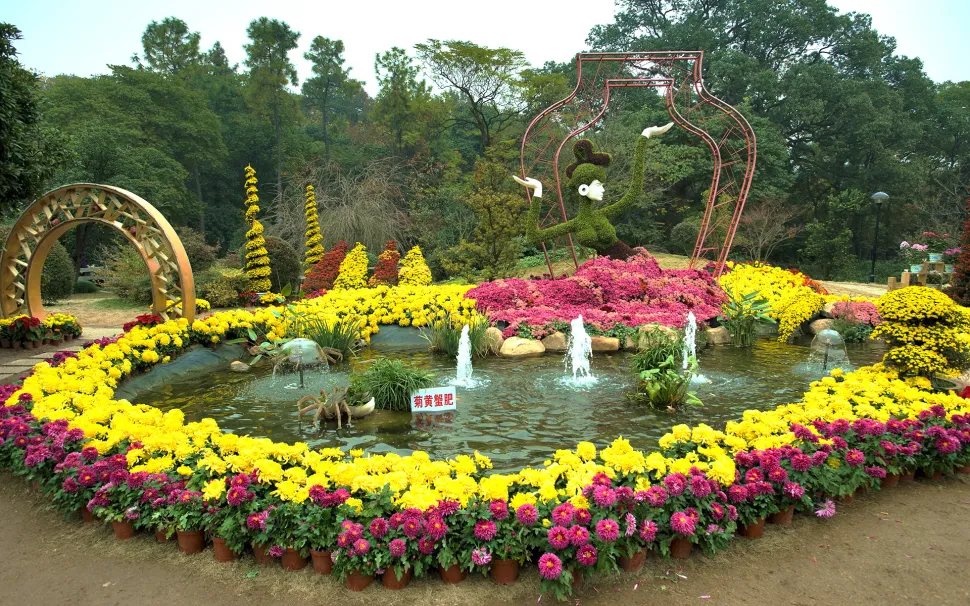
In China, chrysanthemums are found in parks, not in cemeteries - Photo by Wolverine_01 / Goodfon
Chrysanthemums are also offered on All Saints' Day in Spain and Italy, but elsewhere their meaning and use are very different.
In China, the chrysanthemum is one of the four noble plants, along with bamboo, prunus flower and orchid. It represents autumn and symbolizes longevity, pleasure and happiness.
Chrysanthemums are alsoassociated with nobility in Japan. It is the emblem of the imperial family. It even has its own festival, on September 9, and the Kiku Matsuri, from mid-October to mid-November. The plant, in full bloom, is then displayed in temples, shrines, gardens, railway stations and castles across the country.
In Australia, chrysanthemums have been traditionally offered on Mother's Day since the early 20th century. The reason? On the other side of the world, the plant blooms in May, just in time for Mother's Day, and in English, the golden flower is called chrysanthemum or mum... Meaning mother.
# 7 Chrysanthemums come in almost every color
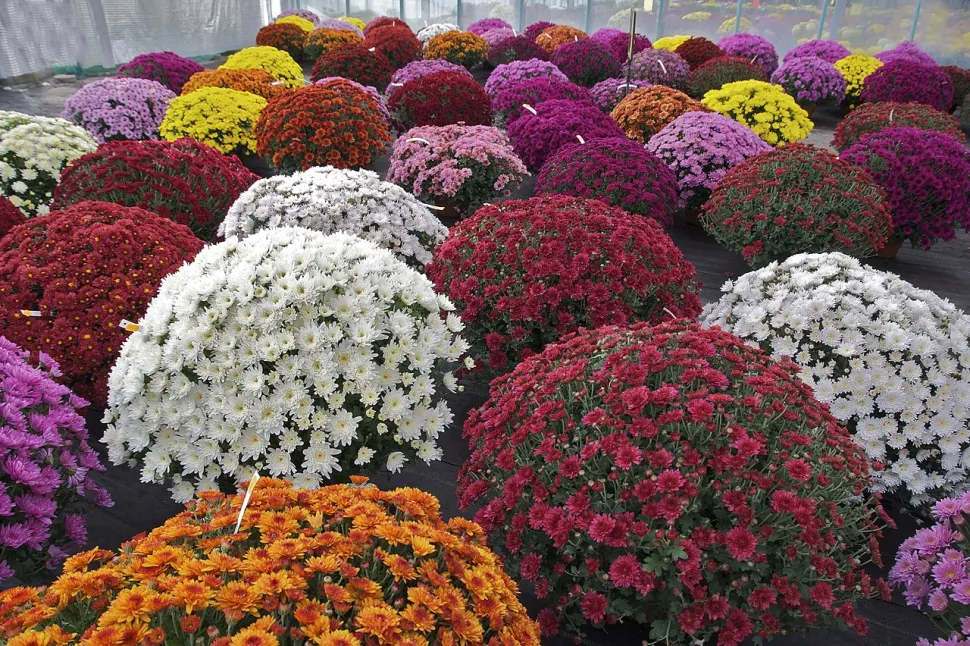
What if the most complicated thing about Chrysanthemums is choosing? Photo by Jebulon / Wikipedia
In ancient Greek, Chrysanthemum means golden flower. However, not all Chrysanthemums have golden flowers - far from it! In fact, flowering varies according to species, hybrids and cultivars. For example :
- Pastel yellow for Chrysanthemum indicum "Poésie
- Violet for Chrysanthemum "Mei-Kyo
- Red for Chrysanthemum "Oury
- White for Chrysanthemum arcticum
As there are over 1 ,000 different Chrysanthemum varieties, you're almost certain to find the color you're looking for when you buy your plant.
# 8 Chrysanthemums come in all sizes
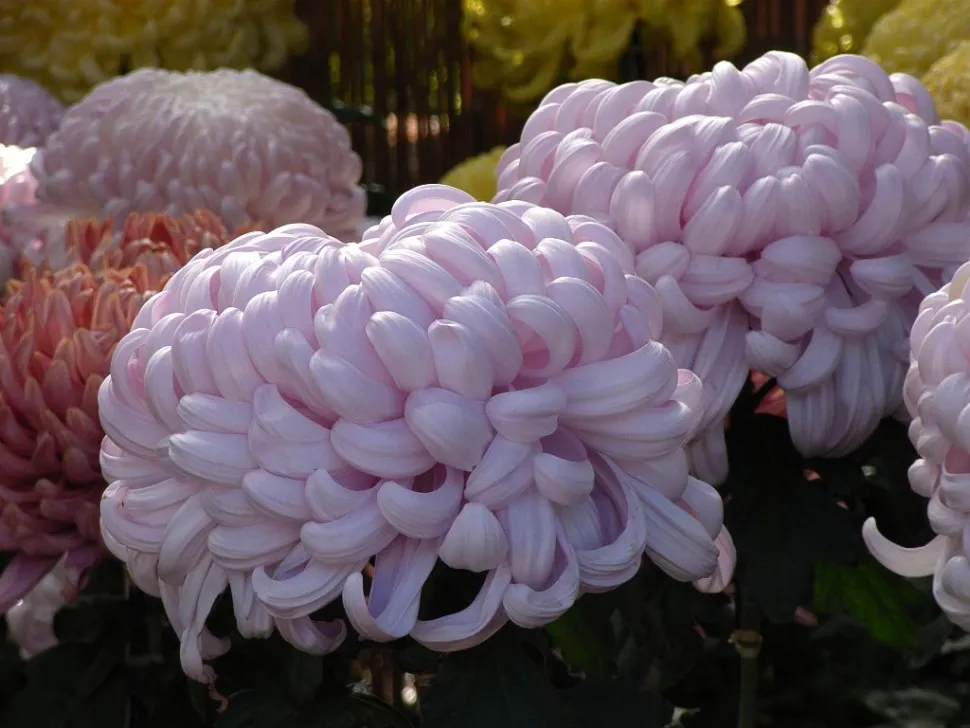
During the Chrysanthemum Festival in Japan, you can admire giant flowers - Photo by Sigusr0 /flickr
Chrysanthemums also come in all sizes. Some dwarf Chrysanthemum indicum cultivars are no taller than 20 centimetres, and the flowers measure just two centimetres in diameter. On the other hand, some Chrysanthemum moriflorum varieties reach two meters in height, and flowers over 20 centimeters in diameter bend the stem under their weight.
This diversity has given gardeners ideas. Some grow chrysanthemums as bonsai, transforming the semi-woody stem into a trunk and the flowers into branches. The advantage? Unlike maples, ficus or conifers, you don't have to wait years to shape your miniature tree. One year is enough to give your creation the shape you want.
On the other hand, some people prefer giant compositions. This is the case in Japan, for example. Imperial garden landscapers spend months preparing "large pieces". These giant chrysanthemums reach four meters in height and are displayed to the public during the Kiku Matsuri. Hundreds of flowers, lined up and identical in size, bloom at the same time, to the delight of visitors.
#9 Chrysanthemum cut flowers can last for weeks
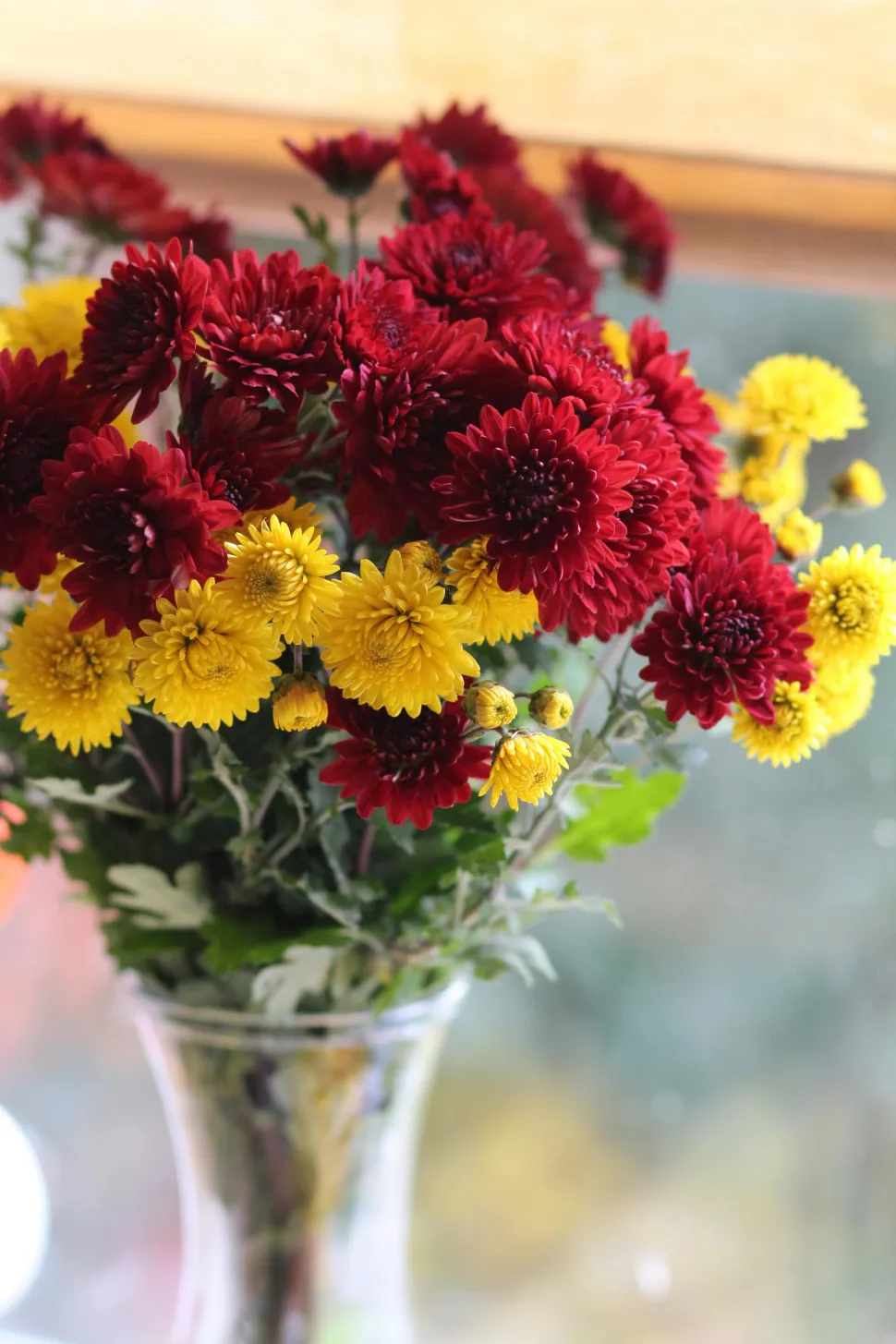
The living can also enjoy a bouquet of Chrysanthemums - Photo by Katana / Pexels
Chrysanthemums are excellent flowers for bouquets. While peonies, roses and other tulips only last a few days in a vase, cut chrysanthemums last up to three weeks.
To keep your bouquet fresh for longer, cut the stem at an angle so that the plant can better absorb water. Repeat this operation twice a week. After a few days, sap will form at the base of the stem, preventing water from penetrating. Finally, keep the water in your vase clear. Remember to change it every two days.
#10 Chrysanthemums are medicinal plants
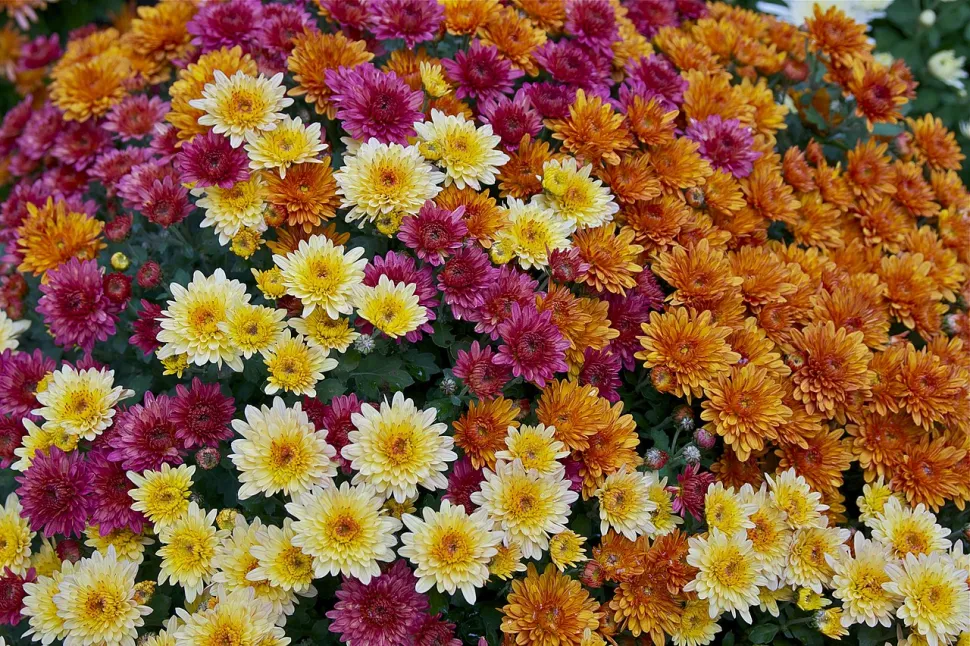
We don't know if chrysanthemums really cure migraines, but at least they're pretty - Photo by Jebulon / Wikipedia
In Asia, particularly China, Chrysanthemums are believed to have medicinal virtues. It is often consumed as an infusion to treat ailments such as blood pressure, headaches, respiratory problems and irritated eyes. It is also said to have antioxidant, anti-inflammatory, antibacterial and antiviral properties.
But don't make your own infusion from flowers picked in your garden! Only certain varieties can be used for medicinal purposes.
What's more, the foliage is reputed to be toxic, particularly to animals. In dogs and cats, ingesting chrysanthemum leaves causes digestive problems (vomiting, diarrhea, etc.). Contact with the foliage can also cause skin irritation in both animals and humans.
By Servane Nemetz
on 22-08-2025 at 13h00
on 22-08-2025 at 13h00

